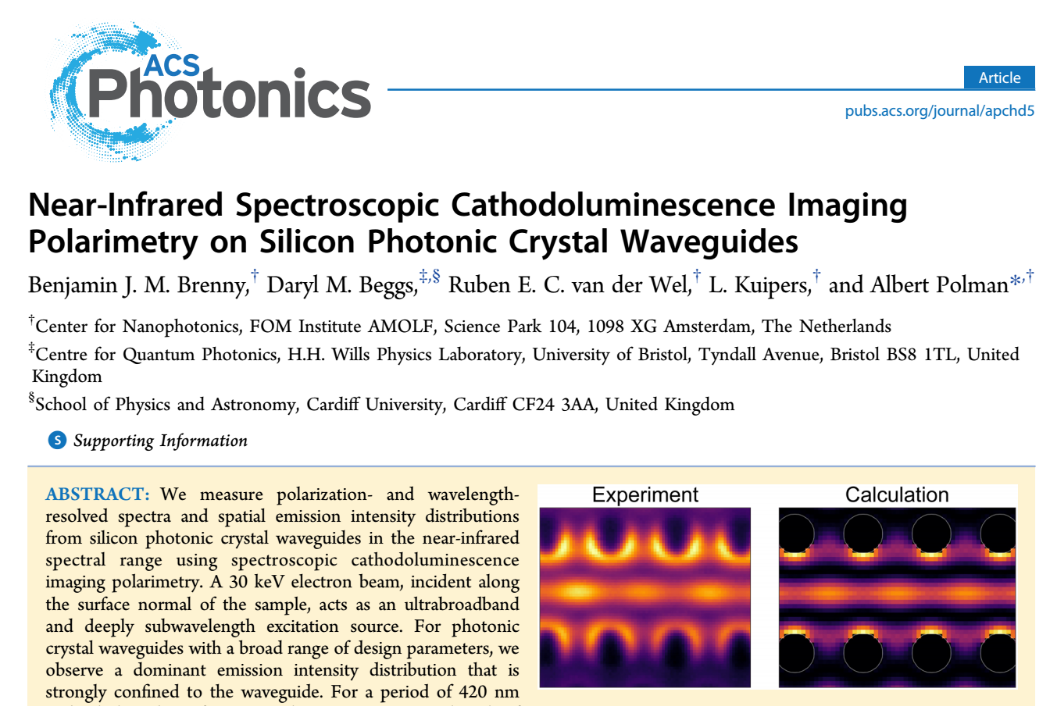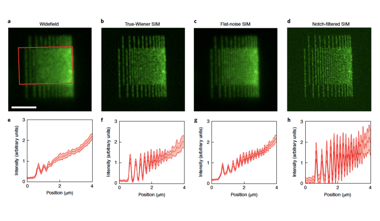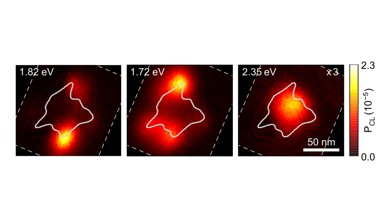All of the articles were written by DELMIC collaborators of which two papers described research conducted by the FOM institute AMOLF. The other paper originated from the Charged Particle Optics group of TU Delft.
AMOLF is a laboratory based in Amsterdam which carries out fundamental research into complex material and biological systems. The SPARC was originally developed at AMOLF at the end of 2011 for nanophotonics research, and is now being used worldwide for a broad range of research in the fields of materials science, geology, and optics.
In the first paper, written by Benjamin Brenny, polarization- and wavelength resolved spectra and spatial emission intensity distributions from a photonic crystal were measured in the near-infrared regime using the cathodoluminescence SPARC system. Specifically, they were interested in knowing how the electron beam couples to the electromagnetic eigenmodes of the system. These measurements are essential to further exploiting the many applications of photonic crystal waveguides. Click here if you are interested in reading the full text in the ACS photonics Journal.
The other article, also published by Benjamin Brenny, describes how electrons generate light and plasmons in a material. The article presents calculations that describe the time- and space-dependent electric fields of TR (transition radiation) and SPPs (surface plasmon polaritons) that were induced by electrons on a metal surface. The full text article, that appeared in the journal Physical Review B, can be found here.
The last article was published by our collaborators at the TU Delft, the first author being Robert Moerland. Robert is working on one of the newest and most trending topics in CL which is time-resolved cathodoluminescence imaging, research that DELMIC is also closely involved in. When using a beam-blanking approach for application of lifetime CL in nanophotonics, the difficulty is to achieve both temporal resolution (far below typical emitter lifetimes) and spatial resolution (far below the diffraction limit) at the same time. Moerland has explored this challenge by building his own setup that existed of standard SEM hardware and electronics, an electrostatic beam blanker and a modified SECOM system to detect the CL signal. Results showed that deep-subnanosecond beam blanking in conjunction with time-resolved CL photon detection can be implemented using standard SEM hardware and electronics, while simultaneously reaching a λ/10 spatial resolution. The results show that time-resolved electron cathodoluminescence spectroscopy is a powerful tool of choice for nanophotonics, within reach of a large audience. An online version of the article that appeared in Optics Express can be found here.
.png)






